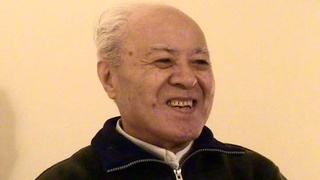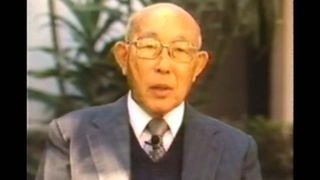Interviews
Teaching English in Japan
There's I know...there were two Americans. Soldiers I guess. They were dressed as civilians but I think they were soldiers. I'd sit at the bar and the, um, the bartender I mean the lady, -- the girl said, You know Jerry-san. I really like that one guy. You know he keeps coming in looking at me. And It makes me nervous but you know I really like him, you know. So I say, Oh. Then why don't you go over and tell him. I been teaching her all this English, you know? She says, "Yeah but I'm kind of shy. So she says would you please tell him for me," you know? So I went up to him.
That was the first time I used my so-called full, long sentences. I says, excuse me but... It took me some time but I said, "I'm American." And he says, "Yeah, what do you want buddy?" And I says, I'm American. And you are American. I want to tell you something. And he says, "Yeah, what?" I says, "See that girl over there? Sachiko, or whatever her name was. Sachiko...or Sayuko... Anyway, I said she likes, she likes you. He says, "Oh is that right? God so many of the guys thinks she's fabulous. So I really like her a lot too." Out of them, they were too, both of them were too shy to say anything, you know. So basically what I did was fix them up. my.
So Sayuko came over and they start chatting and I was translating and all that kinda stuff and, and sitting there. And kinda made friends with them in a way, you know. And my English starting coming back again. But, uh, then I went back and did my classes and she, uh disappeared. She took...after that she never came back. And I went to the bar and she wasn't there, so I asked one of the girls, and she was new there, you know. So she said I think, I think she went to America.
Date: June 29, 2012
Location: California, US
Interviewer: Chris Komai, John Esaki
Contributed by: Watase Media Arts Center, Japanese American National Museum










